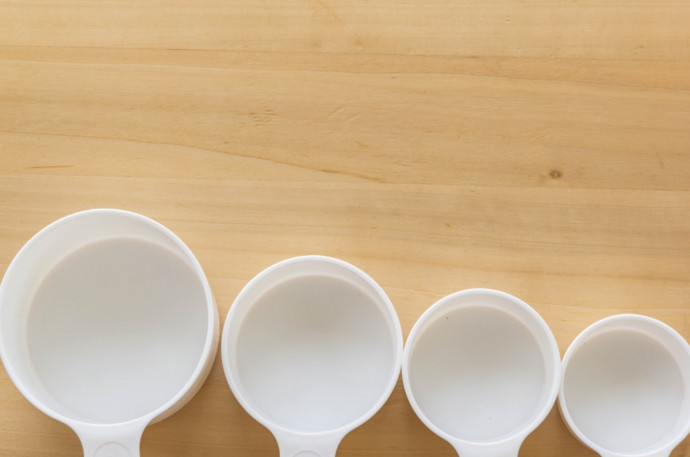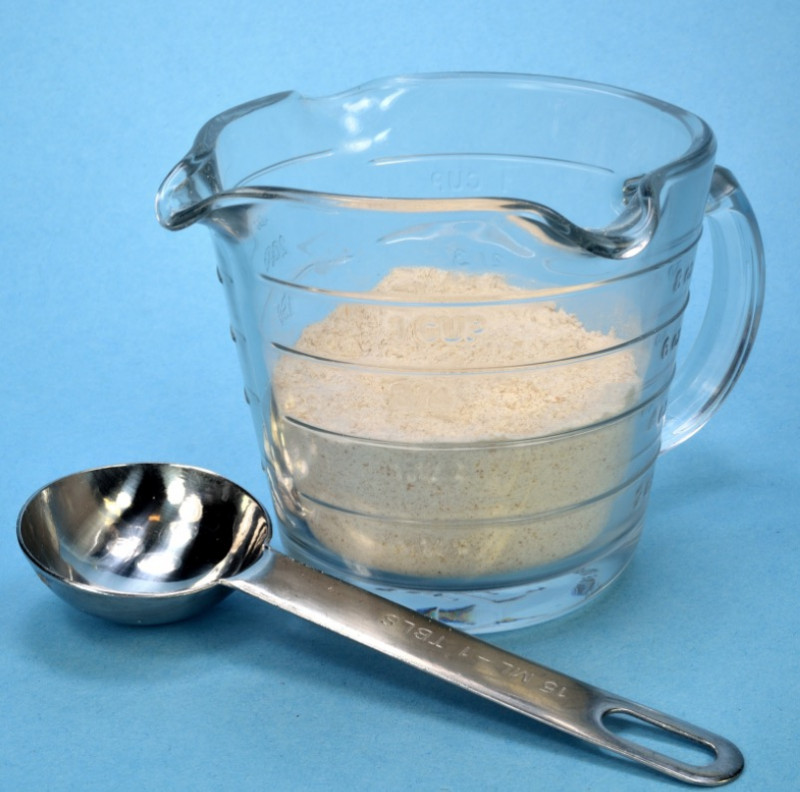8 Cooking Hacks for Proper Measurement

Proper measuring of ingredients is important to successful cooking and baking. Some foods can be greatly affect by too much or too little of certain ingredients, such as salt, baking soda, baking powder and hot or spicy ingredients, such as cayenne pepper. The following tips will assist you in ensuring that your ingredients are measured properly. There are also some helpful cooking hacks that will surely help you survive in the kitchen even without measuring cups and measuring spoons.

1. Better spreaders
A butter knife is a serviceable utensil for spreading nut butters and preserves, but for even better spreading, take a cue from cake decorating and reach for a mini offset spatula. Just as it aids in frosting cupcakes, the tool’s wider blade allows you to scoop more from the jar at once and spread with ease.
2. No-slip mixing
If you like to keep one hand free for adding ingredients to the bowl when using a handheld mixer, you can keep the bowl from sliding around by placing it on a rubber shelf liner or silicone baking sheet liner. The mixing bowl sticks to the liner and stays stable.
3. Lump-free thickening
Adding cornstarch to liquid ingredients when making pudding or pastry cream can result in lumps. Use the following method to smoothly blend the thickener into the liquid.
1. Instead of adding the cornstarch by itself to the liquid, mix it with the sugar from the recipe.
2. Slowly add the cornstarch-sugar mixture to the liquid. The sugar will help the cornstarch to dissolve without creating any lumps.
4. Stable scooping
Angling a mixing bowl can make it much easier to dig in while scooping out cookie dough or cake frosting. To stabilize your bowl at the perfect angle while keeping your hands free for scooping, place the mixing bowl in a pot lined with a dish towel. The now-secure bowl can be tilted in any direction.
5. A handy rule of thumb
The length between the thumb’s knuckle and its tip is almost exactly 1 inch, so you can use your thumb as a guide for measuring and chopping the first few pieces during ingredient prep and then use those pieces as guides for the remaining cuts. (For some people, the distance between the second joint of the pointer finger and its tip is closer to 1 inch. Measure both your thumb and your pointer finger with a ruler to see which is more accurate.)
6. Making the grade(s)
To avoid having to drag out a ruler every time you want a precise cut, use a permanent marker to mark measurements right on your cutting board.
1. On one edge of a wooden cutting board, make marks for ¼ inch, ½ inch, ¾ inch, and 1 inch.
2. Place an item against the guide to check your knife work.
7. Elevated measuring
Resting a liquid measuring cup with its contents on a flat surface is essential to obtaining an accurate measurement. To avoid having to crouch down to read the measurement from a cup sitting on a counter or table, try this tip: invert a large mixing bowl on the counter and place the measuring cup on the bowl.
